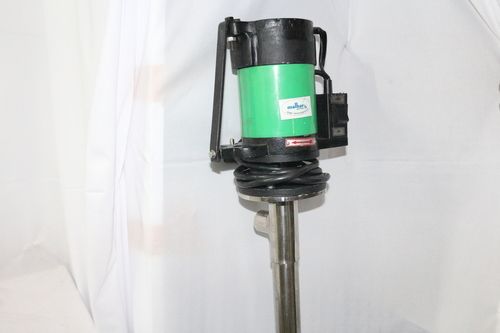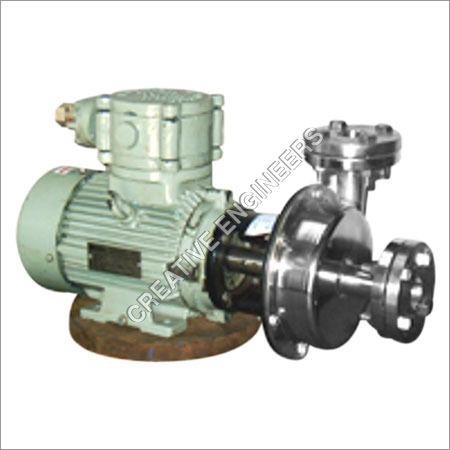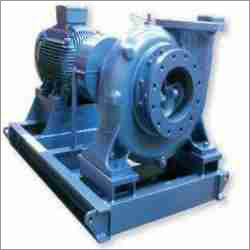
Industrial Barrel Pump
16000 INR/Unit
Product Details:
- Material Stainless steel
- Power Electric
- Pressure High Pressure
- Usage Water Air Pump Oil Well Water Well Boat Food Automobile Cosmetics Paper Printer
- Application Cryogenic Fire Maritime Metering Sewage Submersible
- Click to view more
X
Industrial Barrel Pump Price And Quantity
- 1 Unit
- 16000 INR/Unit
Industrial Barrel Pump Product Specifications
- Water Air Pump Oil Well Water Well Boat Food Automobile Cosmetics Paper Printer
- Electric
- High Pressure
- Cryogenic Fire Maritime Metering Sewage Submersible
- Stainless steel
Industrial Barrel Pump Trade Information
- Cash on Delivery (COD) Cash Against Delivery (CAD) Cash in Advance (CID) Cheque Cash Advance (CA)
- 10 Unit Per Day
- 7-30 Days
- Yes
- Sample costs shipping and taxes has to be paid by the buyer
- Eastern Europe Middle East Central America Africa South America Western Europe Australia Asia North America
- All India
Product Description
Our company manufactures, supplies and exports a comprehensive range of durable stainless steel Barrel Pumps. These sophisticated pumping equipment, widely used in different industrial units, are preferred for their dimensional precision and better service life. They can handle highly viscous liquids as easily as water. These are utilized to unload and shift the liquid from barrel to different places. Our products, tested on stringent quality grounds, are offered in the market at competitive prices.
Attributes:
- Low maintenance cost
- Anti corrosive
- Reasonable price
Barrel Pump Specifications:
- Outer Dia : 40 mm,
- Outlet size : 20 mm Internal Threaded Coupling
- Power : 0.88 kw
- Speed : 10000 RPM
- Voltage : 220v , 50 Hz
- Fitted with ON-OFF Switch
Frequently Asked Questions:
Q: What is a barrel pump?
A: A barrel pump is a device used to transfer liquids from barrels, drums, or other containers into smaller containers or directly into a system or process. It typically consists of a cylindrical tube, a piston or plunger, and a handle or lever.
Q: What types of liquids can be pumped using a barrel pump?
A: Barrel pumps are designed to work with a variety of liquids, including oils, fuels, solvents, acids, alkalis, and chemicals. However, it's important to choose the right pump for the specific liquid being pumped in order to ensure safe and efficient transfer.
Q: What are the different types of barrel pumps?
A: There are several types of barrel pumps, including hand-operated piston pumps, rotary hand pumps, electric drum pumps, air-operated diaphragm pumps, and submersible pumps.
Q: What factors should be considered when selecting a barrel pump?
A: Some important factors to consider when selecting a barrel pump include the type and viscosity of the liquid being pumped, the flow rate required, the type of container or drum being used, the distance and height of the transfer, and any safety or regulatory requirements.
Q: How do you use a barrel pump?
A: The exact method of using a barrel pump may vary depending on the type of pump and the specific application. However, in general, the pump should be inserted into the barrel or container, and the plunger or lever should be operated to create suction and draw the liquid into the pump. The liquid can then be transferred to a smaller container or a system by reversing the plunger or lever.
Q: How do you maintain and clean a barrel pump?
A: Proper maintenance and cleaning of a barrel pump are essential for safe and efficient operation. The pump should be cleaned after each use to prevent buildup of contaminants or residue. Any damaged or worn parts should be replaced promptly. Regular lubrication and inspection can help ensure smooth operation and prevent damage or leaks. Consult the manufacturer's instructions for specific maintenance and cleaning procedures.
Q: What safety precautions should be taken when using a barrel pump?
A: When using a barrel pump, it's important to follow all safety guidelines and instructions provided by the manufacturer. Some general safety precautions include wearing appropriate protective gear, such as gloves and eye protection, avoiding contact with the liquid being pumped, and keeping the pump and surrounding area clean and dry to prevent slips and falls. It's also important to properly store and handle the liquid being pumped, especially if it is hazardous or flammable.
Tell us about your requirement

Price:
Quantity
Select Unit
- 50
- 100
- 200
- 250
- 500
- 1000+
Additional detail
Mobile number
Email







 Send Inquiry
Send Inquiry Send SMS
Send SMS Call Me Free
Call Me Free
